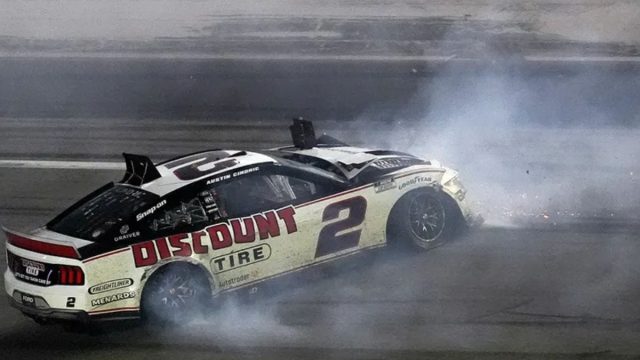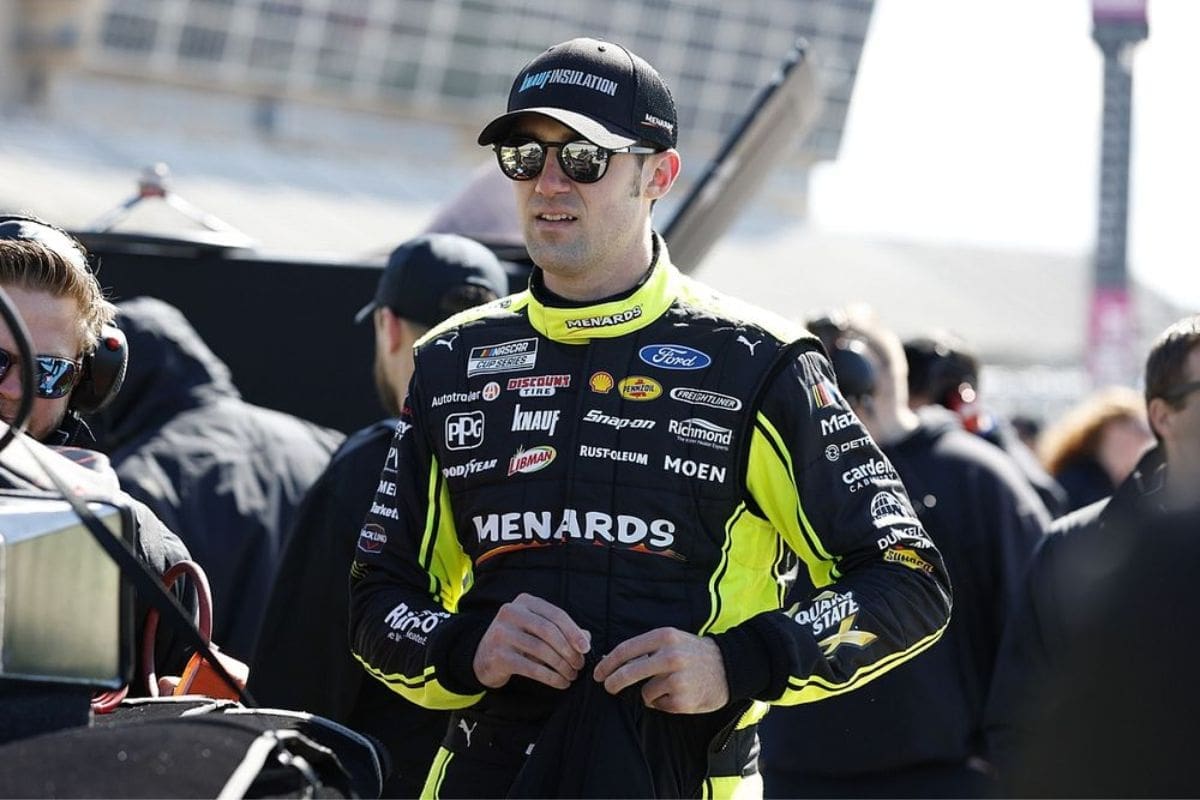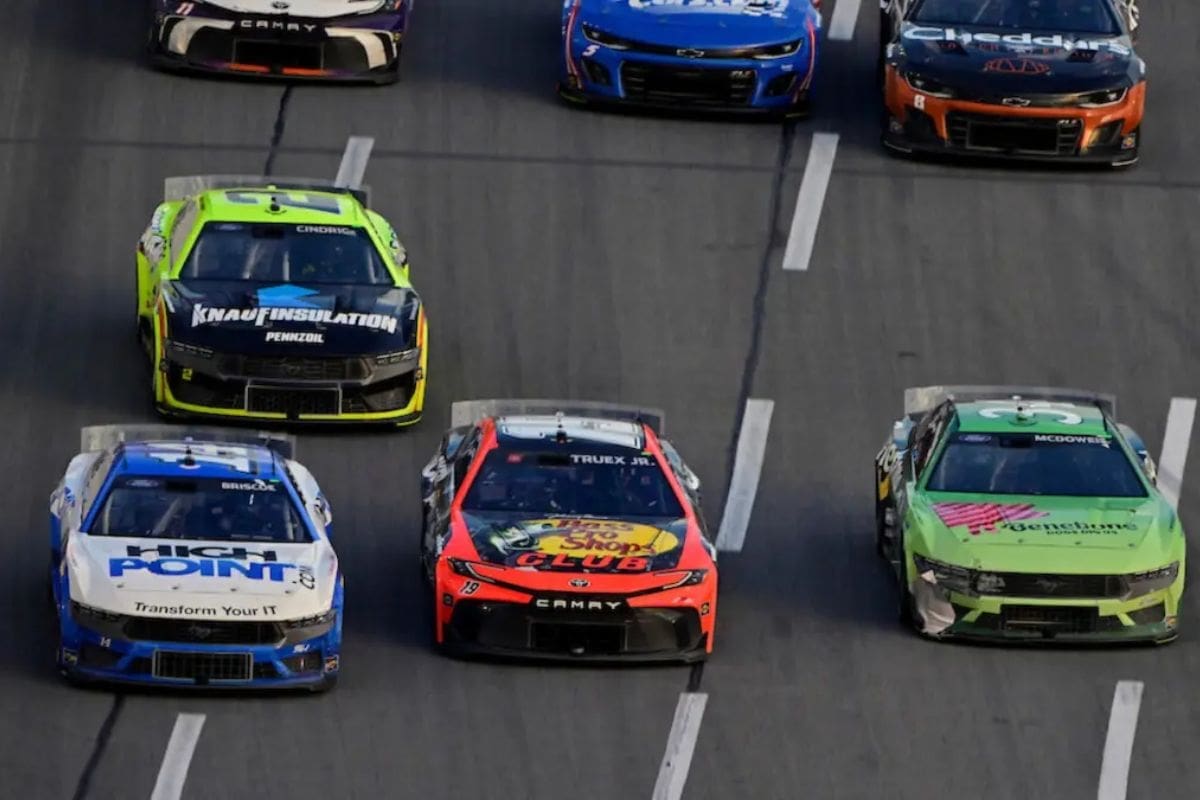Austin Cindric’s Daytona Crash: The recent incident at Daytona International Speedway, where Austin Cindric articulated that “everyone triggered a wreck” during a chaotic crash involving 13 competitors, invites a deeper examination of the psychological and tactical complexities inherent in NASCAR racing. Cindric’s frustrations shows the fine line drivers tread between aggressive tactics and situational awareness, particularly in racing environments. As the implications of this crash spread through playoff scenarios, one must consider how such moments not only shape individual careers but also influence the broader dynamics of the sport. What lessons might emerge from this dramatic unfolding?
Key Highlights
- Austin Cindric was central to the Daytona crash, prompting him to reflect on collective driver responsibility amidst the chaos.
- The incident on Lap 153 involved multiple cars, highlighting the unpredictability and high stakes of pack racing.
- Cindric expressed frustration over the crash, admitting situational factors like being out of fuel influenced his actions.
- The aftermath reshaped playoff standings, affecting drivers like Bubba Wallace and benefiting Kyle Busch’s chances.
- The crash reignited discussions on NASCAR’s safety measures, underscoring ongoing challenges and the need for improved protocols.
Incident at Daytona International Speedway
Amidst the electric atmosphere of Daytona International Speedway, an unexpected incident on Lap 153 transformed the race’s dynamics and left fans in disbelief. The abrupt collision, described by many as a bombshell, sent shockwaves through the crowd as multiple cars became entangled in a high-speed wreck. This crucial moment altered the path of the race but also highlighted the fragility of racing strategies in such environments.
As the wreck unfolded, the immediate aftermath revealed considerable damage to several vehicles, raising concerns about the race’s integrity and the well-being of the drivers involved. However, in a remarkable display of resilience, some teams quickly assessed their cars and initiated repair efforts, indicating that they were determined to return to competitive form. This phenomenon underlines the critical importance of adaptability in motorsport, where the ability to recover from unforeseen incidents can be the difference between victory and defeat.
The incident also serves as a clear reminder of the inherent unpredictability in racing. Despite meticulous planning and strategy, variables such as driver behavior, track conditions, and the actions of rivals can dramatically shift the race’s landscape in an instant.
As fans processed the chaos of Lap 153, it became evident that the race would not only test the skill of the drivers but also their mental fortitude in maneuvering the consequences of collective misjudgments. This incident encapsulated the thrilling yet perilous nature of Daytona, where every lap holds the potential for exhilaration or calamity.
Michael McDowell and Austin Cindric’s Involvement
The aftermath of the Lap 153 incident at Daytona revealed a complex interplay between competitors, particularly emphasizing the roles of Michael McDowell and Austin Cindric. The event, characterized by a chaotic collision involving multiple vehicles, placed both drivers in precarious positions that would ultimately alter their race trajectories.
McDowell, representing Front Row Motorsports, emerged as a victim in this scenario, his car airborne amidst the fray. Fortunately, he reported no injuries, yet the incident forced him to retire prematurely, necessitating a thorough examination of the vehicle’s damage.
On the other hand, Cindric, driving the No. 2 Ford Mustang for Team Penske, found himself at the epicenter of the crash. His involvement was critical, as he occupied a position where the collision’s impact was most concentrated.
Despite the chaos, Cindric’s response remained ambiguous; he neither fully acknowledged culpability nor denied intentionality regarding the incident. This reticence adds layers to the narrative, prompting questions about competitive strategy and the ethics of racing tactics.
Both drivers’ retirements from the race highlight the inherent unpredictability of motorsports, where split-second decisions can have profound consequences. The incident serves as a reminder that the dynamics among competitors can lead to unintended outcomes, complicating the narrative of rivalry and sportsmanship in NASCAR.
Austin Cindric’s Reaction
Austin Cindric’s reflections on the Daytona incident demonstrate a blend of frustration and introspection, showcasing the complexities of racing dynamics. The young driver, often viewed as the poster child for the chaotic nature of restrictor plate racing, conveyed an intricate understanding of the events that unfolded. His commentary indicates a recognition of the multi-faceted interactions that contribute to such high-stakes moments on the track.
Cindric’s assertion, “everyone triggered a wreck there,” highlights a vital element of racing: the interplay of intentions and outcomes. While he expressed that he did not deliberately push another driver, the nature of the sport often leads to unintended consequences. His admission of being out of fuel adds another layer, suggesting that situational factors can exacerbate the volatility of pack racing.
“I haven’t seen the replay, but I wasn’t trying to push him. I mean, it sounds like I made contact. I was out of gas, but everyone triggered a wreck there, especially since there were not many laps to go. I think the intentions were there, but just a lot of energy to the pack and the same thing with how I got spun out of the lead.” – Cindric
Austin Cindric said he wasn't trying to push Michael McDowell but ended up making contact with him. pic.twitter.com/SNnevqxQrU
— Bob Pockrass (@bobpockrass) August 25, 2024
The final laps are characterized by heightened urgency, wherein drivers may act on instinct rather than deliberation, leading to a perfect storm of close-quarter racing.
Moreover, Cindric’s mention of energy in the pack lends insight into the psychological and physical strain faced by competitors. The dynamics of drafting and positioning can create a feedback loop, where one driver’s movement triggers a chain reaction.
NASCAR’s Safety Measures and Wreck Impact
Racing, by its very essence, is fraught with risk, and the recent events at Daytona have reignited critical discussions surrounding NASCAR’s safety measures and their effectiveness in mitigating wreck impacts. The chaotic nature of the Coke Zero Sugar 400, with seven caution periods and multiple notable crashes, emphasizes the ongoing challenges faced by the sport in ensuring driver safety.
NASCAR’s introduction of safety measures, such as the right-side rear window air deflector following Corey LaJoie’s car flip at Michigan, reflects an adaptive approach to safety. However, the recent flips of Josh Berry and Michael McDowell at Daytona raise pressing questions about the efficacy of these interventions.
While the intention behind such innovations is to prevent airborne incidents, the recurrence of serious accidents suggests a need for ongoing evaluation and improvement of safety protocols.
The impact of these wrecks extends beyond immediate physical injuries; they also jeopardize the drivers’ playoff aspirations, adding a layer of psychological strain to an already perilous environment. The cascading effects of a single crash can alter the path of multiple competitors, highlighting the interconnected nature of racing safety.
As NASCAR continues to navigate the delicate balance between speed and safety, it is imperative for stakeholders—drivers, teams, and officials in a similar manner—to engage in open dialogue regarding the effectiveness of current measures and the need for potential innovations.
Playoff Prospects and Final Race
While the excitement of the NASCAR playoffs looms just on the horizon, the stakes have never been higher as drivers jockey for the remaining spots in an increasingly competitive field.
With only one race left at Darlington Raceway, the mathematical intricacies of qualifying have intensified. Currently, four playoff spots remain undecided, yet the race for three of them appears most fervent.
The fallout from the dramatic wrecks at Daytona has reshaped the landscape for several contenders. Bubba Wallace’s playoff aspirations have suffered a severe blow, whereas Kyle Busch’s remarkable runner-up finish has reinvigorated his chances. His resurgence highlights the unpredictable nature of the Cup Series, where momentum can shift rapidly.
Other drivers, including Martin Truex Jr., Chris Buescher, and Ty Gibbs, are closely monitoring their standings as they aim to secure their positions through points.
Harrison Burton’s victory at the Coke Zero Sugar 400 has already guaranteed him a playoff berth, but the equation remains complex. The winner of the final race at Darlington will clinch another coveted spot, leaving only two positions available for those relying on points.
As the final race approaches, the psychological and tactical elements of racing will be as critical as ever. The competitive landscape is razor-thin, and the battle for playoff spots promises to deliver high-stakes drama that could redefine careers.
News in Brief: Austin Cindric’s Daytona Crash
The Daytona incident serves as a crucial case study in the dynamics of NASCAR racing, showing the precarious balance between aggression and control among drivers. Cindric’s observations highlight the complexities of decision-making under stress, revealing how a collective miscalculation can lead to substantial consequences. As playoff prospects hang in the balance, the need for tactical restraint becomes paramount, emphasizing the importance of individual accountability within the larger framework of competitive racing.
ALSO READ: Austin Cindric Aims to Rewrite NASCAR History With Team Penske After Breaking 85-Race Curse



